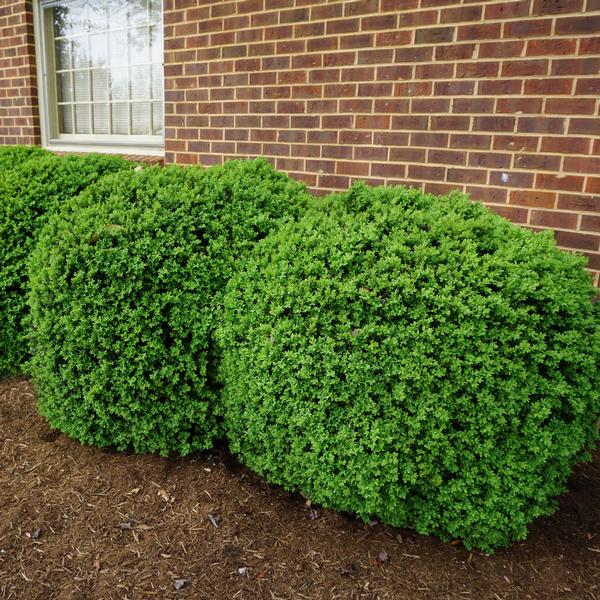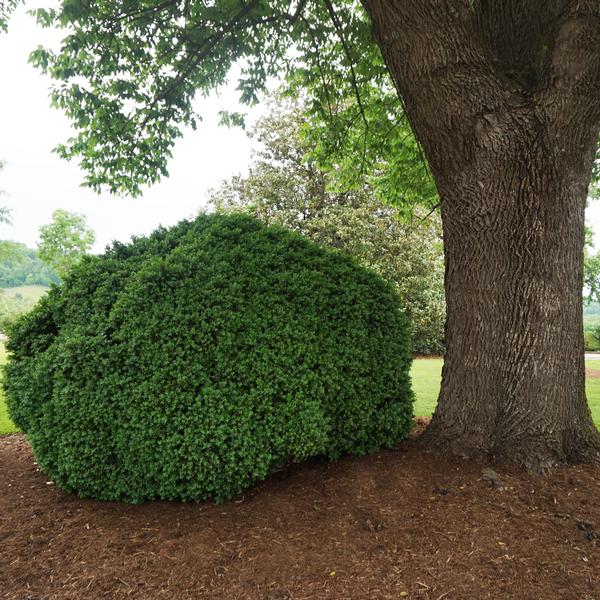Buxus sempervirens 'Suffruticosa'
English Boxwood
Saunders Brothers has discontinued growing this variety in favor of better performing boxwood. Please see additional information for recommended substitutes.
A basic plant in many Colonial gardens, known for soft, billowy outline and lush foliage, great for holiday decorations. In ideal environment, plant will continue to grow for 75 to 150 years and develop into a very large shrub.
- Category:Shrubs
- Hardiness Zone:6-8
- Tall:2-3 Feet
- Wide:2 Feet
Foliage Color
| • | Green |
Soil Moisture Preference
| • | Good Drainage |
Wildlife
| • | Deer Resistant |
Boxwood Exposure
| • | Shade (Location has no direct sun) |
| • | Part Shade (Location is primarily shaded from late morning to late afternoon) |
Boxwood Zone
| • | Zone 6 (Average Annual Minimum Temperature -10 F to 0 F) |
| • | Zone 7 (Average Annual Minimum Temperature 0 F to 10 F) |
| • | Zone 8 (Average Annual Minimum Temperature 10 F to 20 F) |
Boxwood Foliage Color
| • | Green (Foliage is Predominately Green) |
Additional Information about Buxus sempervirens 'Suffruticosa'
Recommended Substitutes: 'Little Missy', 'Justin Brouwers', 'Green Beauty', 'Green Velvet', 'Green Mound', 'Green Gem'
Growing & Maintenance Tips for Buxus sempervirens 'Suffruticosa'
English boxwood thrives when left basically unpruned. Never shear. Shearing will increase the foliage density and thus the chance of disease problems. English thrives best when planted in shade to partial shade and left unpruned. Thinning is recommended either in early winter for holiday decorations or in late winter to early spring before new growth appears. This will help sunlight and air to penetrate the canopy of the plant and reduce disease incidence. Use hand pruners.
English boxwood is very resistant to boxwood leafminer but very susceptible to boxwood blight. Take special attention when planting and caring for English boxwood as it is prone to disease issues. Do not replant it in areas where other English boxwood have died due to disease problems or on sites where English were previously planted. Avoid areas with poor drainage and areas with direct afternoon sun. Monitor soil pH and maintain in 6.5-7.0 range.
Interesting Notes about Buxus sempervirens 'Suffruticosa'
Comments: English boxwood in its optimal environment is untouched in its beauty. It has probably been the most extensively planted boxwood in the United States over the past 100 years. However, many people have planted it on undesirable sites and the plant has not done well. If planting English boxwood, take special considerations. If conditions are questionable, consider a different cultivar. Unfortunately, this may be a plant of the past.
Uses: Medium specimen, foundation plant, foliage for holiday decorations.
Substitutes: ‘Little Missy’, ‘Justin Brouwers’, ‘Green Beauty’, ‘Green Velvet’, ‘Green Mound’, ‘Green Gem’

